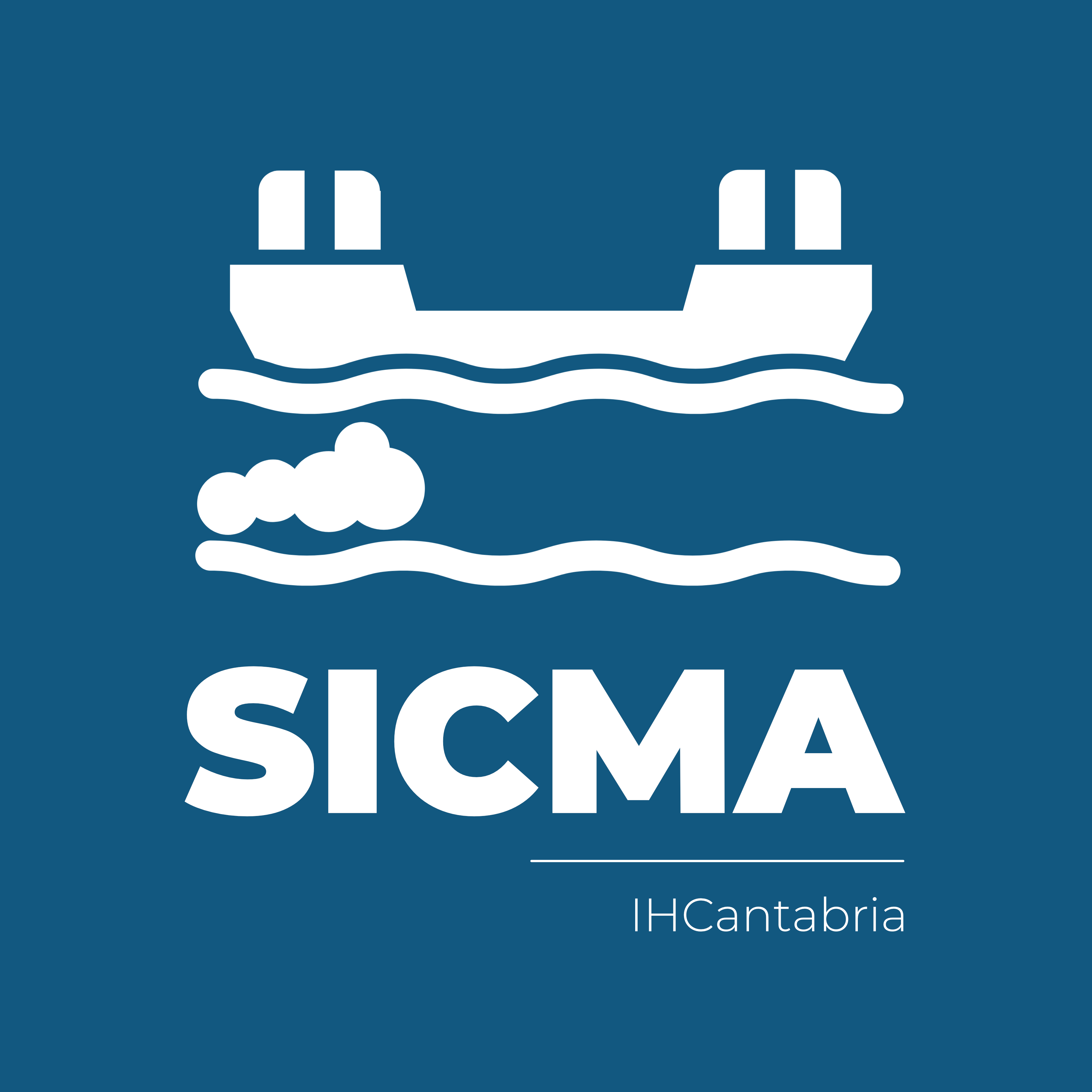SICMA
Development of a system for the prevention and response to marine and air pollution by Hazardous Noxious Substances
Workpackage 1: Definition of the final product (functionalities and value-added products) and basic development.
SICMA will consists of the following components:
- SICMA Data Hub: A new interface for the management of large volume of operational data required for the development of innovative products regarding society’s challenges such as maritime safety and environment
- SICMA ocean-atmosphere operational: operational coupled system based on the development of new algorithms fed by the Data Hub which allow: a) to predict the evolution of HNS spills and b) to predict the evolution of the toxic cloud and the corresponding affected area
- SICMA risk: Planning system based on the development of new methodologies which allow: A) to evaluate the risk of HNS spills on human health and on the marine and coastal environment, and b) to provide action protocols and response strategies that enhance safety in response operations and diminish environmental risk
- SICMA App: New decision support interface that will provide: 1) Access to relevant information for the decision support process (SICMA Data Hub); 2) Access to decision support processes and algorithms (SICMA Operational and Risk); and 3) Visualization focused on decision support

Figure 1. Conceptual framework of the SICMA system
Workpackage 2: Laboratory tests to analyse the physicochemical behavior of families of substances in the marine environment.
To develop this workpackage, firstly a list of the main substances handled in port areas has been drawn up. Then, this substances have been classified into a number N of representative families according to their physical-chemical characteristics and their behavior in the marine environment, i.e. whether they are evaporators, floaters, solvers, sinkers or a combination of any of the above.
Subsequently, based on the high volume handled at CEPSA’s terminals and for their characteristic behaviour, three substances have been selected (Cumene, Monoethylene glycol and Petrosol D20/26). The tests have been designed for each substance taking into account the different processes to be evaluated. In addition, different volumes of discharge and properties of the receiving water (i.e. salinity) have also been considered.

Figure 2. Tests to analyse the evaporation of Cumene in water at different salinities.





